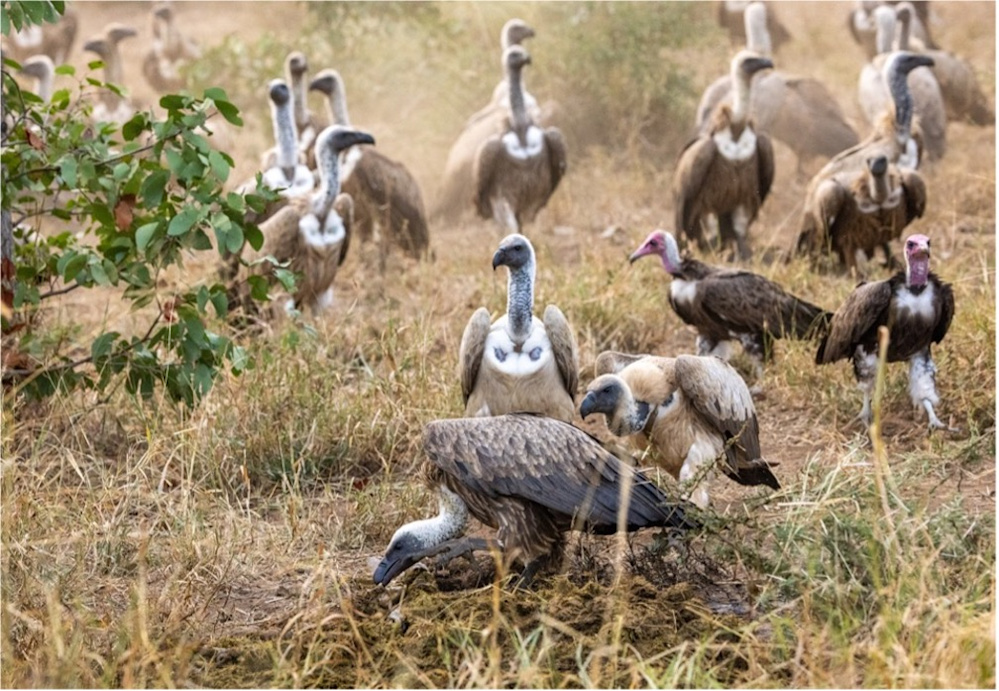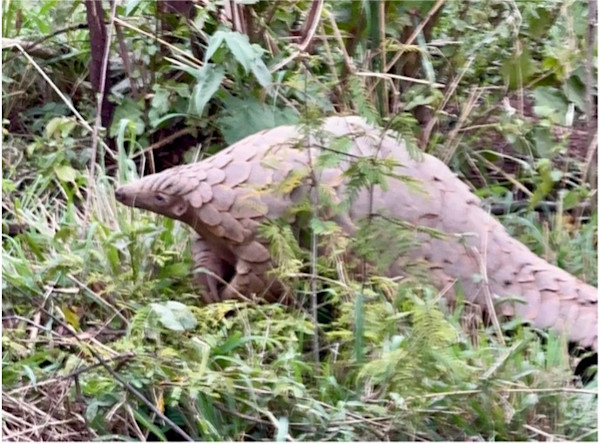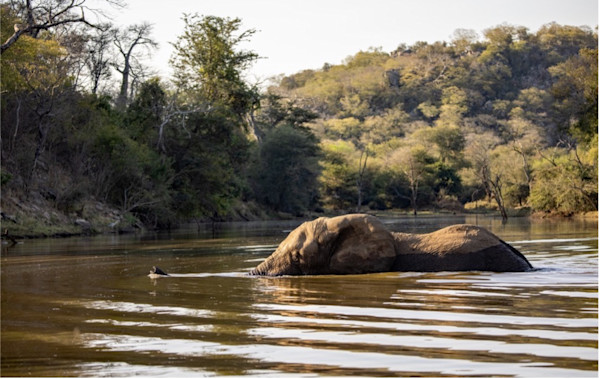July 2025
Biodiversity
Processing a kill
in BiodiversityShare:
Processing a kill
The vultures led us to this kill site, but they weren’t the only ones that could pin-point where lions were. Researchers are in the final stage of a long-term study on lion behaviour. Earlier in the year they selected lionesses from different prides and collared them for monitoring purposes.
A buffalo can weigh about 800 kg and is a tremendous brute force when fighting for its life. Indeed, it was the most feared in the days of “Big Five” hunters and probably accounted for the most injuries and deaths. For lions to hunt and kill a buffalo they need to be experienced, strong and preferably collaborative as a pride of females and males, or as a coalition of males. We cannot be exactly sure which female or male lions killed this buffalo, because we didn’t see the kill, but what was absolutely fascinating was how protective this male was over the kill, and how the two other lionesses had to creep up to him submissively, and then kowtow around him, before they dared approach the kill to feed, after he had eaten his absolute fill. He was so bloated he could barely move!

These lionesses are experienced brutes in their own right – you can see their musculature form, ripped and broken ears, torn tongues, cracked and missing teeth, and scarred bodies. Yet still they both kowtowed to that male! I’m always amazed by the huge size of lionesses, but they are dwarfed by male lions that have a longer body length, taller shoulder height and are typically about 30 to 50% heavier than lionesses.

There’s not much love lost between lions when they are feeding, and both these lionesses kept trying to bite chunks of flesh from the same area of the expansive carcass. One even dragged the carcass on her own to expose more flesh. However, they both kept an eye on the approaching vultures that were eager to get in on the act, but had to do with the stomach contents of the buffalo before the lions abandoned the carcass.

Here’s a brief summary of the lion study to date, from Dr. Allan Tarugara:
In order to understand lion predation at Malilangwe, the property procured three GPS/satellite collars which were fitted onto three adult lionesses from prides with spatially independent home ranges (Nduna Pride, n=9; Chiloveka Pride, n=5; Hippo Valley Pride, n=13 individuals). This research is ongoing and has been running from January to date, with a study period of one year.
The collars are programmed to fix a GPS location every 30 minutes and locations for each consecutive three-day period are downloaded. A cluster of ≥3 points is considered as a potential kill site, and identified clusters are visited in the field for physical inspection. At each site, evidence of kills, if any, is recorded. Kill remains (skull, bones, hide, horns, fur etc.) are used to identify prey species and estimate age.
Preliminary results show that buffalo constitute most kills (31%) made by lions at Malilangwe, followed by zebra (19%), wildebeest (13%) and impala (12%). Buffalo and zebra alone constitute 50% of all kills made.
In terms of biomass, buffalo contribute 61% of the meat consumed by lions, followed by zebra (15%) and wildebeest (8%). Combined, these three species make up >80% of the biomass consumed by lions at Malilangwe. Excluding unknown species, other prey items recorded include kudu, nyala, bushpig, sable, eland, warthog and giraffe.

The wake of vultures standing around provided a brilliant opportunity to see the differences between a Cape vulture (Gyps coprotheres) and a white-backed vulture (Gyps africanus). The Cape vulture (on the left) is larger and paler, with creamy buff plumage, pale bluish-grey neck skin, and a distinctive fluffy light ruff, while the white-backed vulture (on the right) is smaller and darker brown, with a narrow light ruff and a characteristic patch of pale feathers on its lower back that’s visible when perched. Cape vultures also show more contrast on their underwings and have yellowish eyes, whereas white-backed vultures have darker underwings and brown eyes.


By Jenny Hishin
Author / Field Guide


